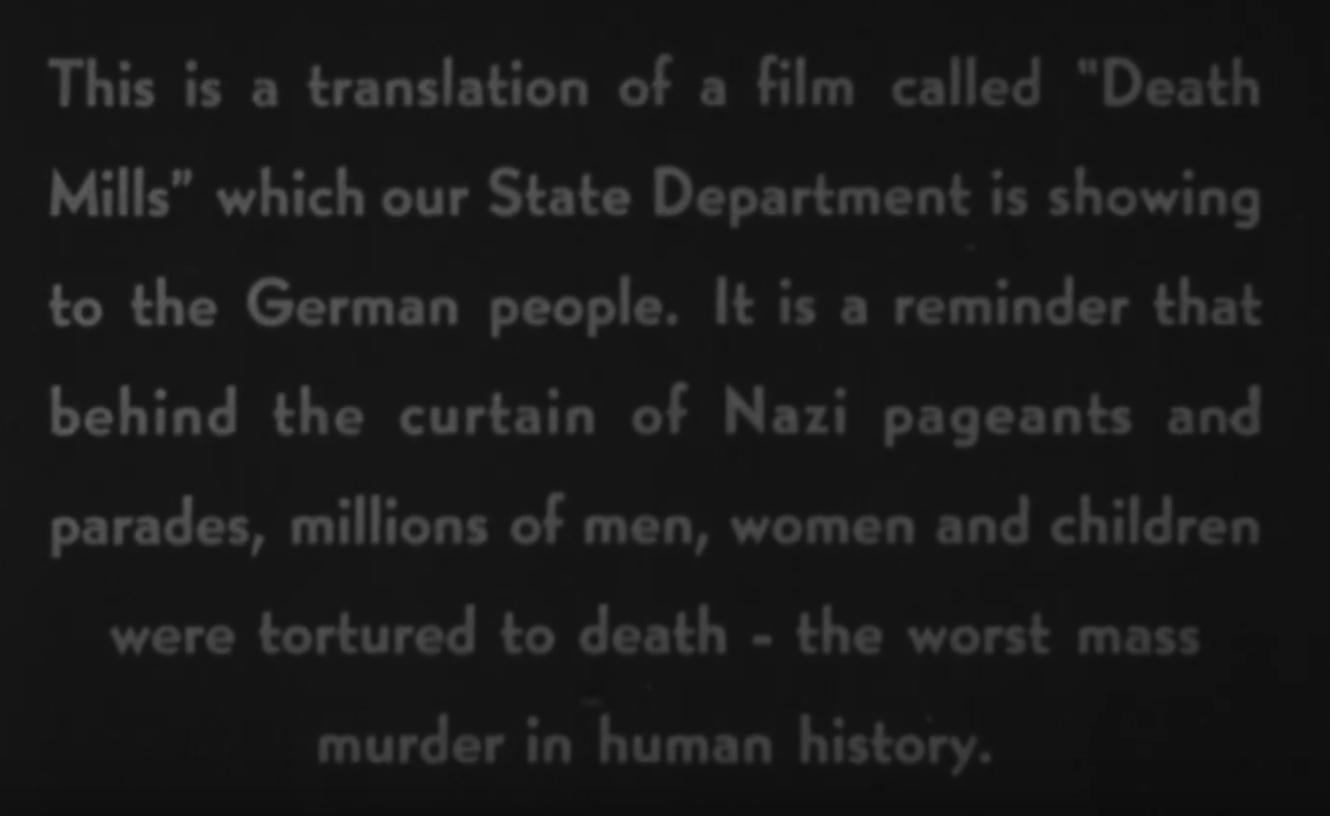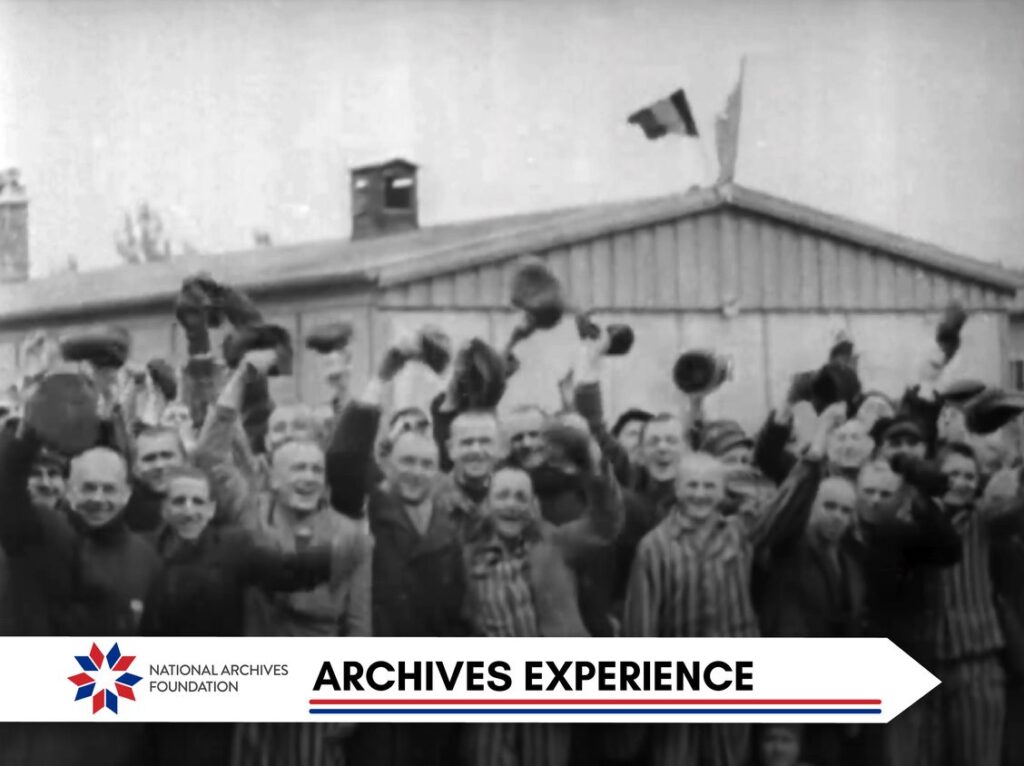Archives Experience Newsletter - April 11, 2023
See For Yourself
We only have one record to show you this week, a film captured by the U.S. Army Signal Corps. It’s part of the National Archives’ contribution to the European Union’s Horizon 2020 program, A Visual History of the Holocaust, a three-year initiative that ended on March 31, 2023.
When this film was released in 1945, it opened the eyes of the world to the horrors of the Holocaust. From German citizens who lived just down the road from camps to Americans across the ocean, people saw the death and destruction of the camps. To truly mean “never again,” we must always remember what happened…
Death Mills
In the final years of World War II, as the Allied powers pushed into Nazi Germany from both east and west, they began to come across concentration camps where the Nazis had held millions of Jews and their political opponents prisoner under appalling conditions. The Allies’ primary mission was, of course, to defeat the Germans, but they liberated the camps as they found them, provided the prisoners with food and medical care and collected evidence of the war crimes that the Nazis had committed against them. Unfortunately, for many of the prisoners, this support came too late to save them.
According to the United States Holocaust Memorial Museum, Soviet troops pushing toward Germany on the eastern front:
July 1944
Were the first to encounter a major Nazi concentration camp, Lublin/Majdanek, near Lublin, Poland
January 27, 1945
Liberated Auschwitz, near the Polish city of Oświęcim
April 4
Reached the Gross-Rosen camp
Fighting their way into Germany from the west in 1945:
April 4, 1945
U.S. forces liberated Ohrdruf, a subcamp of Buchenwald
April 11
U.S. troops reached and liberated Buchenwald and Dora-Mittelbau
April 12
The Canadians liberated Westerbork
April 15
The British freed Bergen-Belsen
April 22
Units of the Polish Armies under Soviet command liberated Sachsenhausen
April 23
U.S. troops reached Flossenbürg
April 29
The Soviets liberated Ravensbrück
U.S. forces liberated Dachau
May 4
British troops reached Neuengamme
May 6
U.S. troops liberated Mauthausen
Supreme Allied Commander General Dwight D. Eisenhower toured Ohrdruf just days after U.S. forces liberated it. In a letter to his chief of staff, George C. Marshall, Eisenhower wrote,
“The things I saw beggar description….The visual evidence and the verbal testimony of starvation, cruelty and bestiality were…overpowering….I made the visit deliberately in order to be in a position to give firsthand evidence of these things if ever, in the future, there develops a tendency to charge these allegations merely to ‘propaganda.’”
Anticipating the need to document the horrors he witnessed at the camp, Eisenhower invited the media in to record the scenes there. He forced residents of nearby towns to go to the camps and see the conditions for themselves.
The National Archives is the repository of thousands of feet of movie film that U.S. Army Signal Corps cameramen shot to document the liberation of Nazi concentration camps by Allied troops. The European Union’s Horizon 2020 Project used many of these reels as part of its Visual History of the Holocaust, a project aimed at providing access to the motion pictures and to tools for analyzing and curating them. The project began in 2019 and was completed in 2022. NARA provided 228 reels, a little more than half of the 438 used in the project, collated from many different series, including newsreels and raw footage.
Among the newly digitized footage is a film titled “Death Mills” that the U.S. State Department assembled and showed to German citizens after the war ended. It graphically depicts the truth about the concentration camps.
This film contains graphic images of concentration camps, starvation and death.
Although it’s an invaluable record of history, it may be difficult to watch.

Death Mills film
(21 minutes 38 seconds)
National Archives Identifier: 36082
To View the Film:
Click on the link above (red text). Once the film opens in a new tab for
viewing directly within the catalog, press the play button to begin watching










